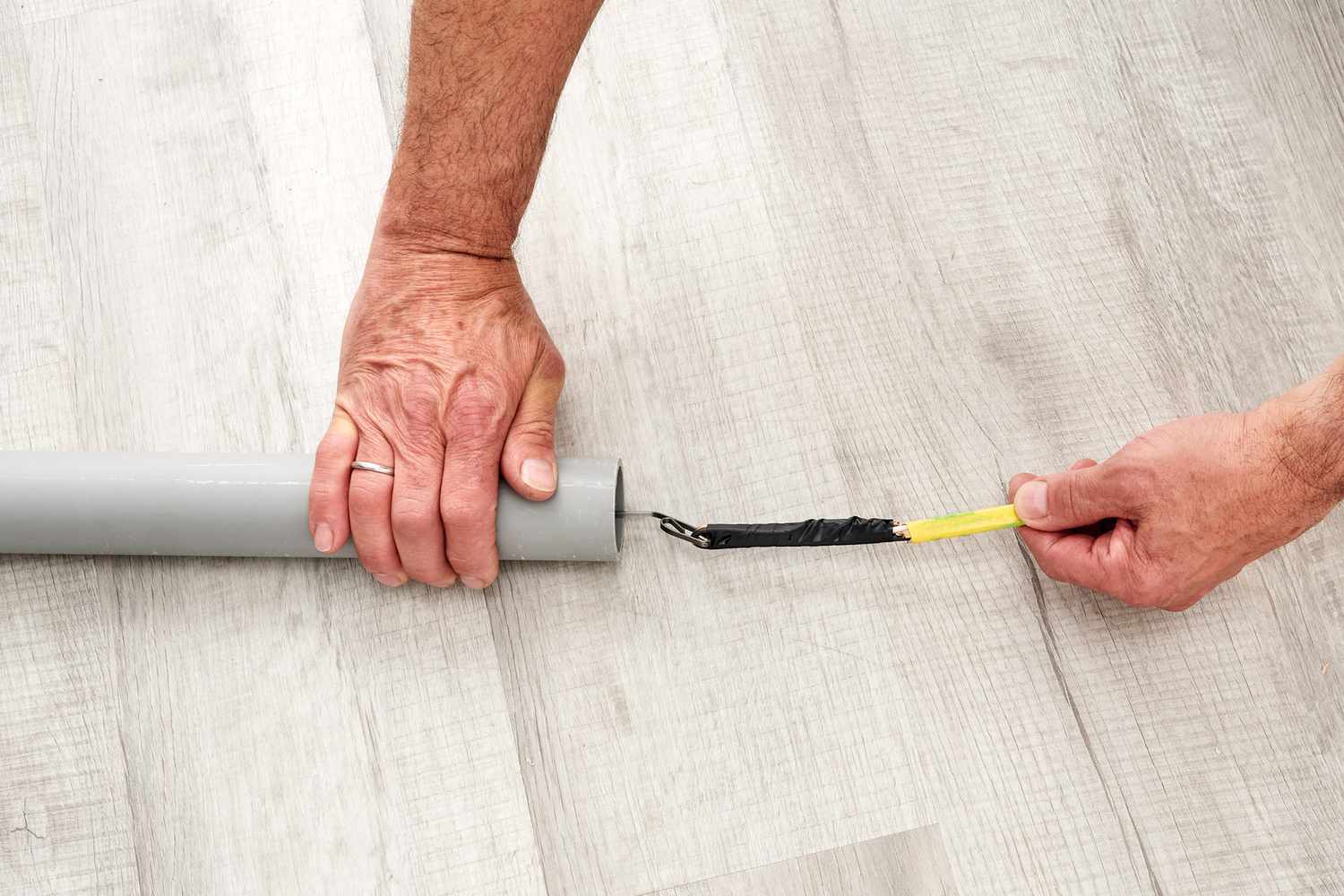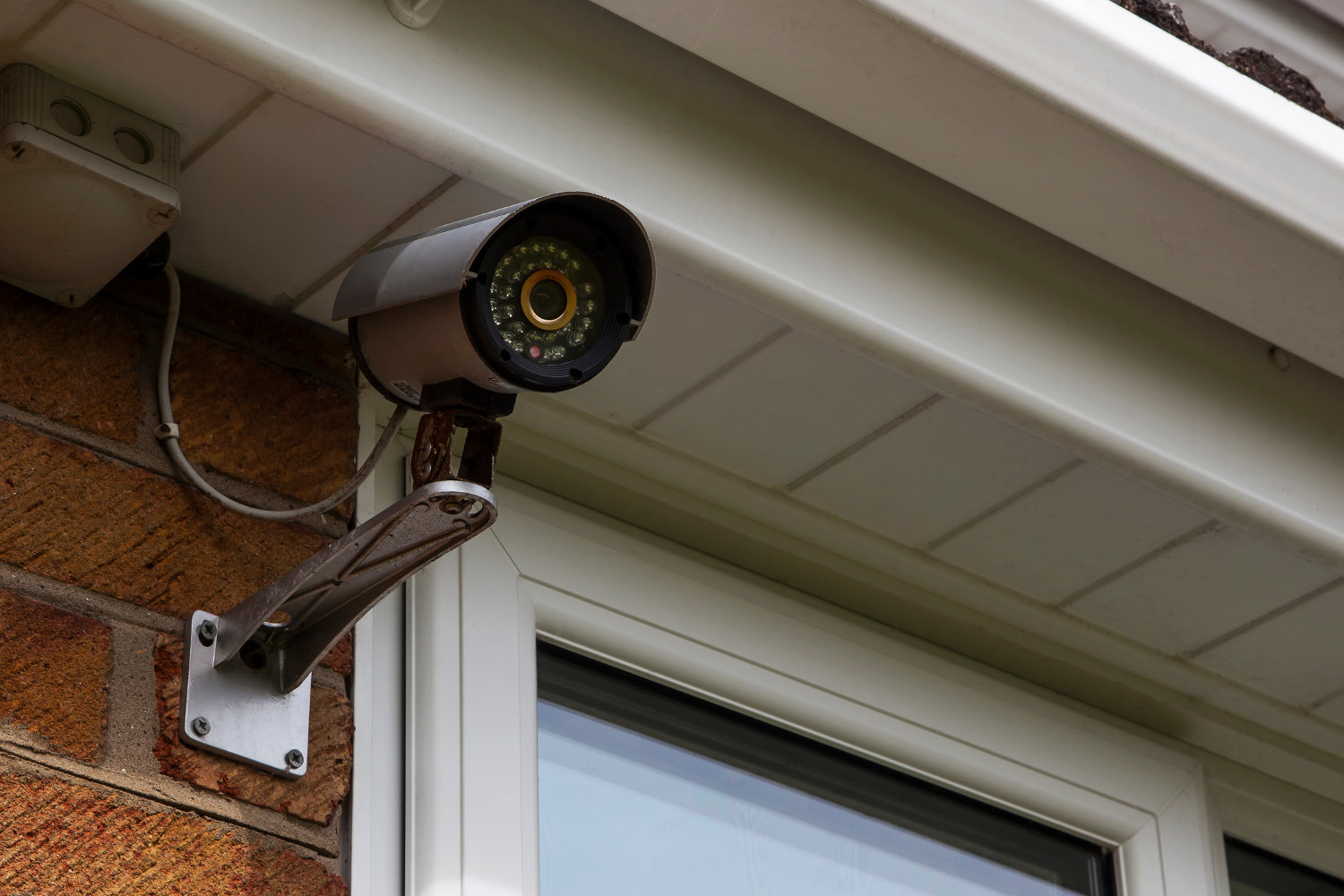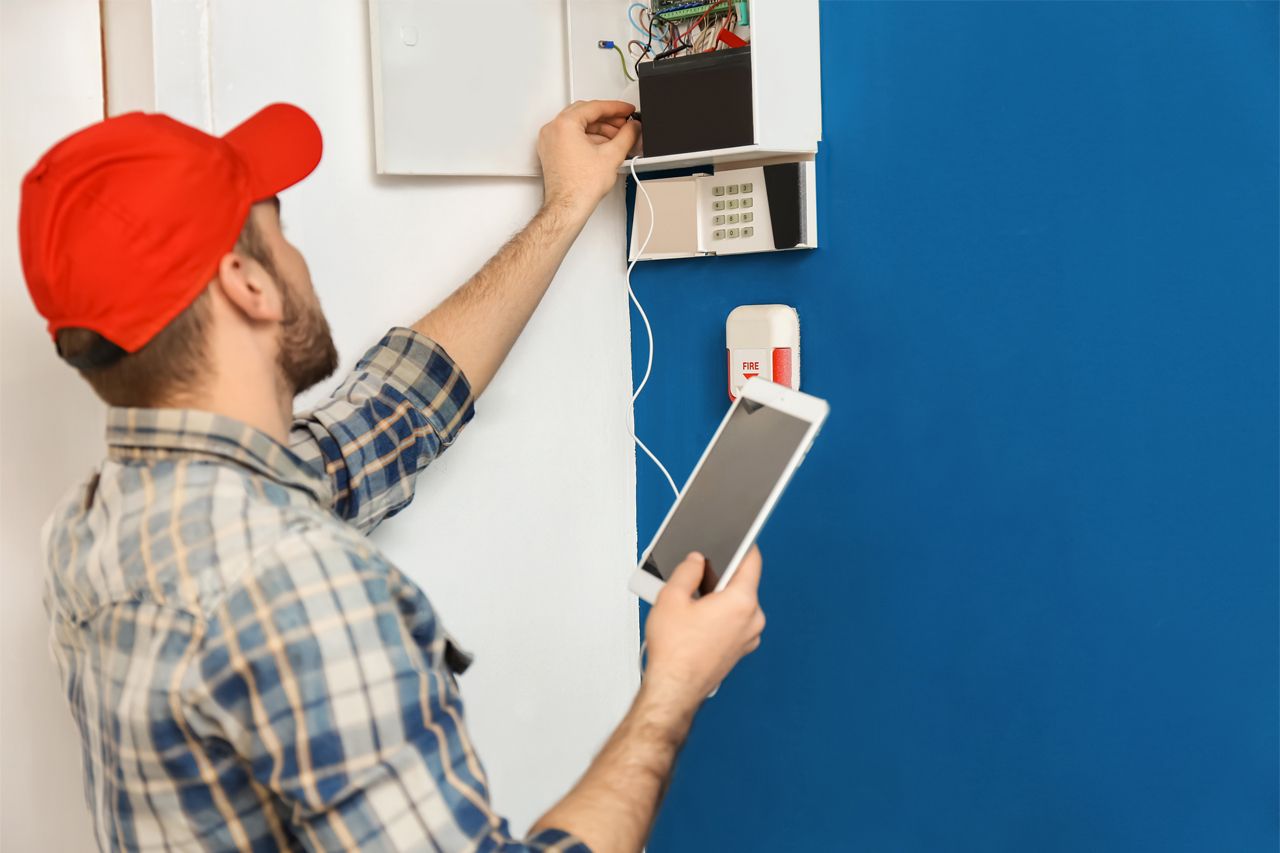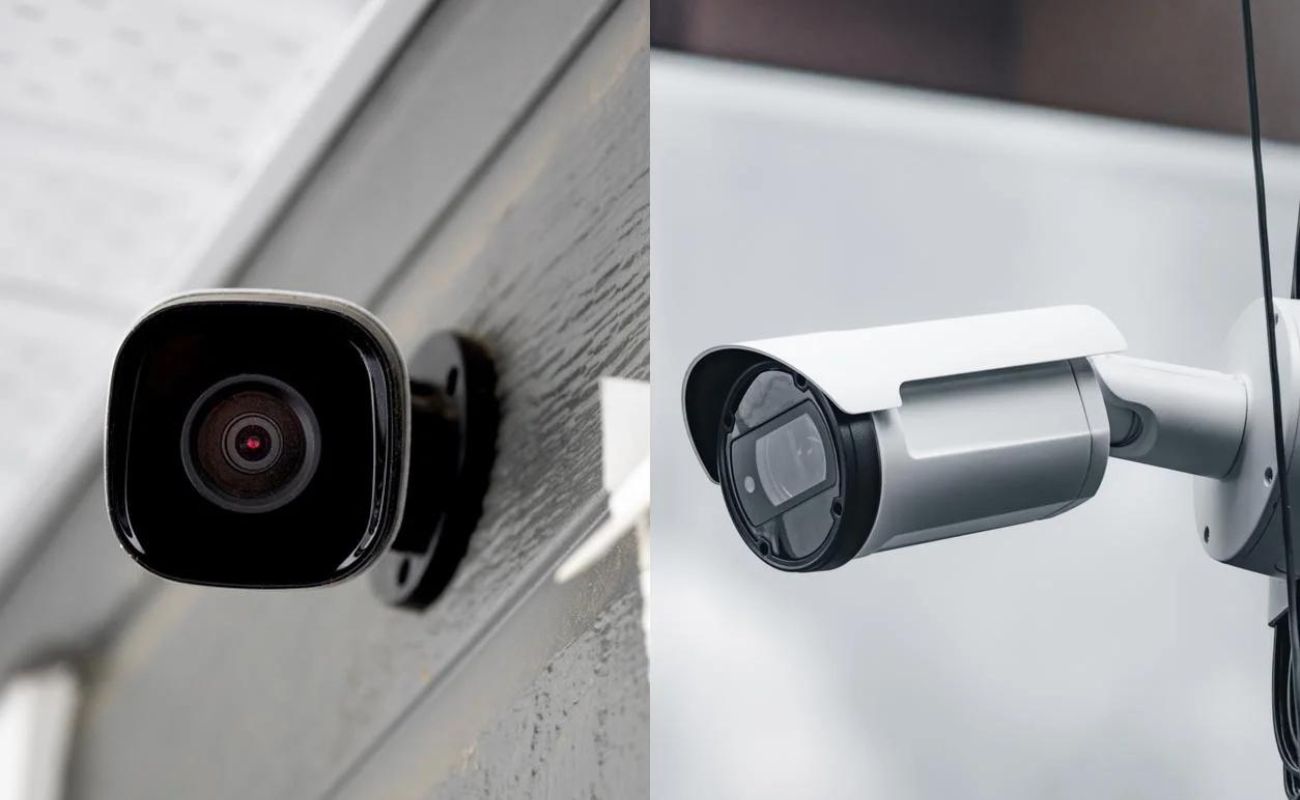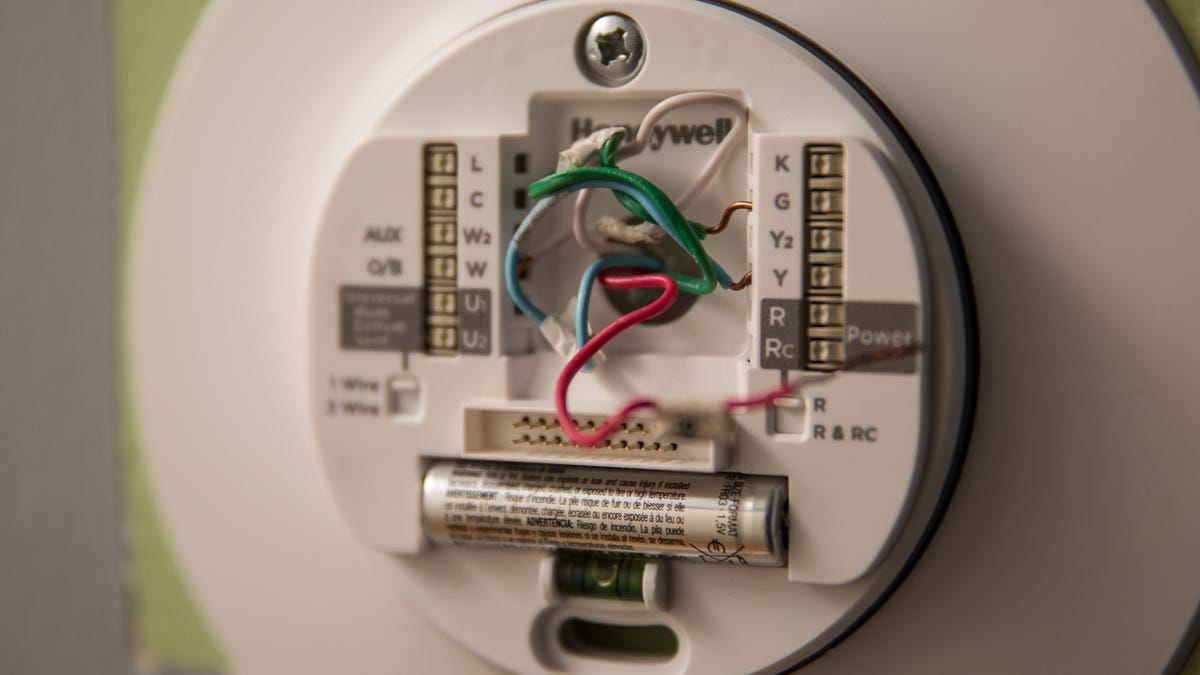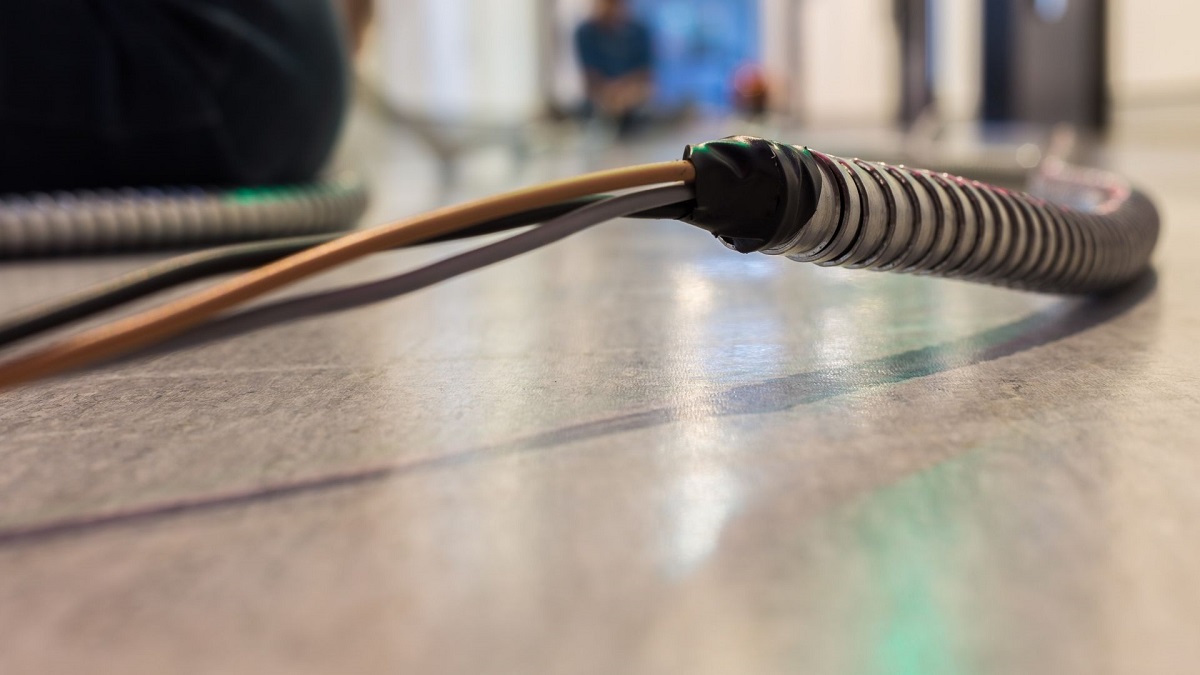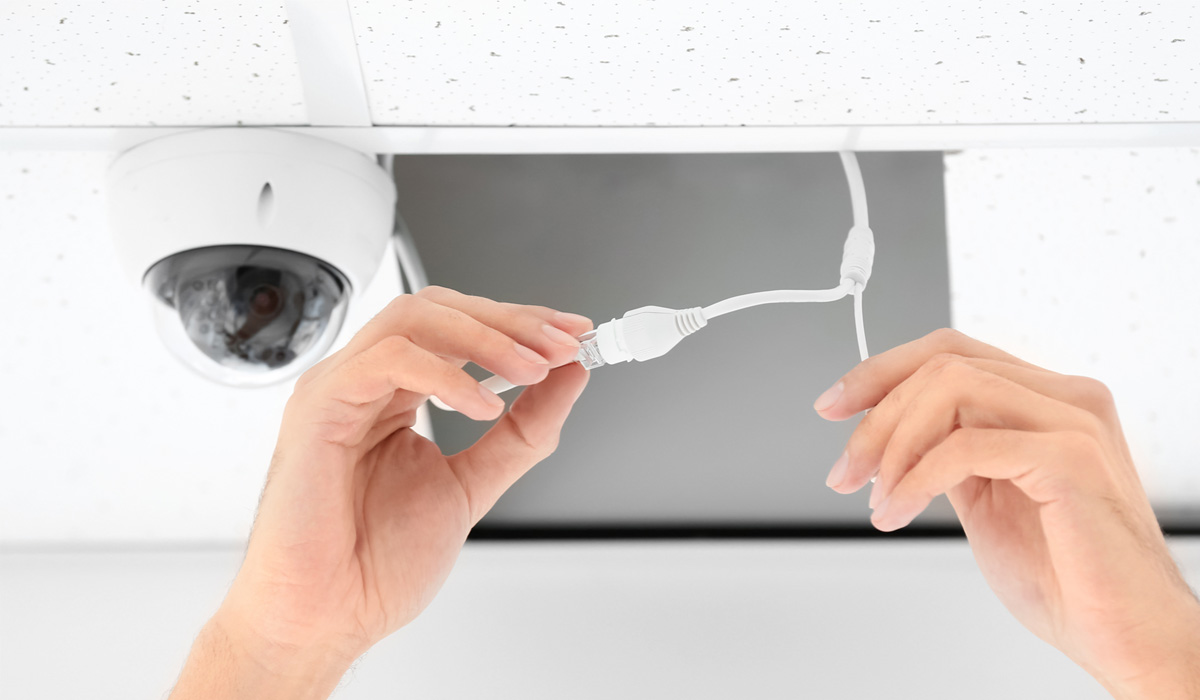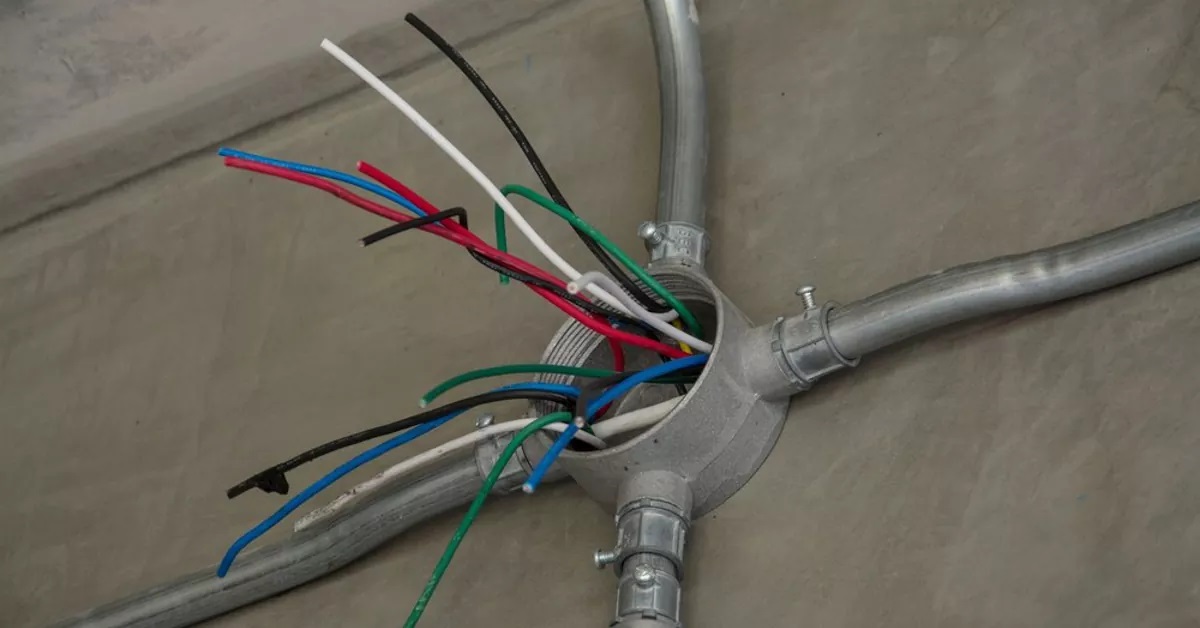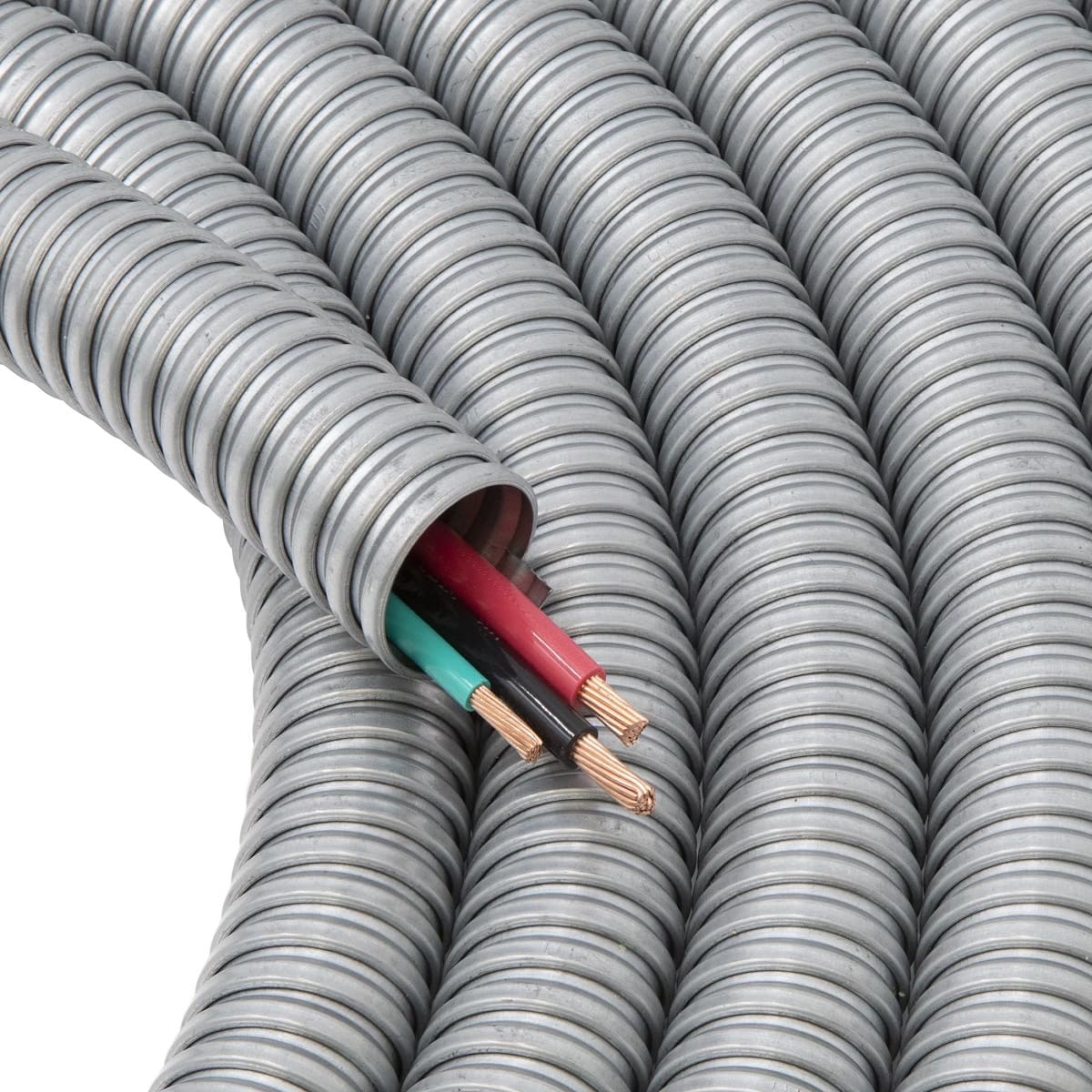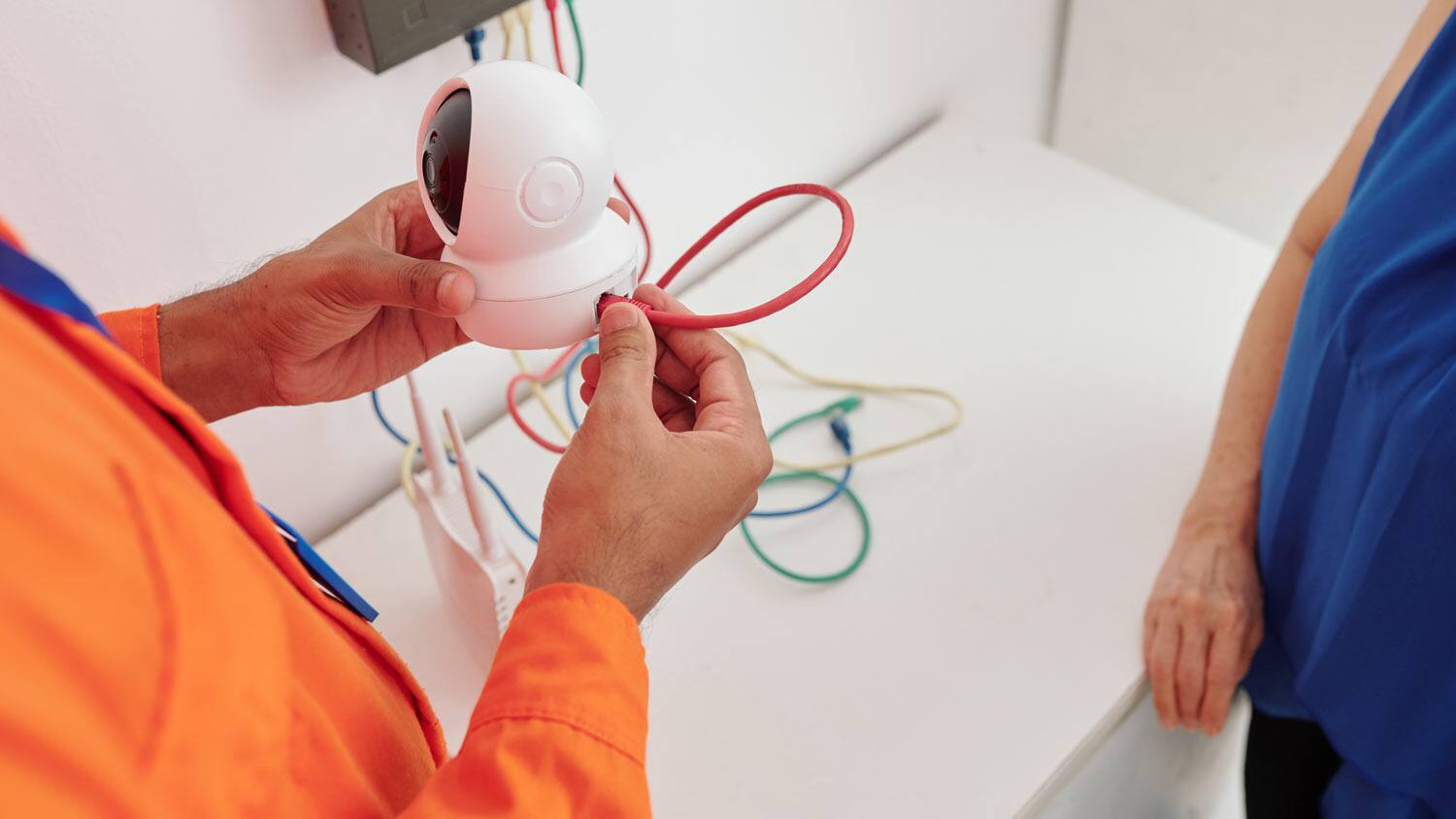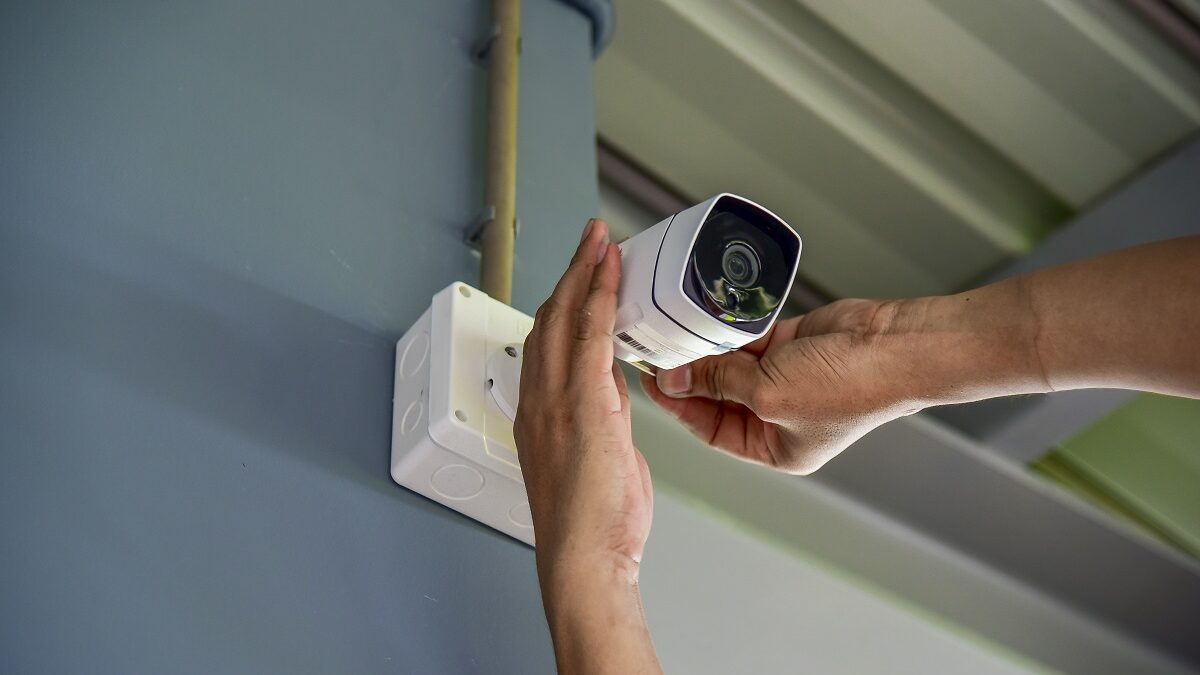Home>Home Security and Surveillance>How To Upgrade My Wired Security System
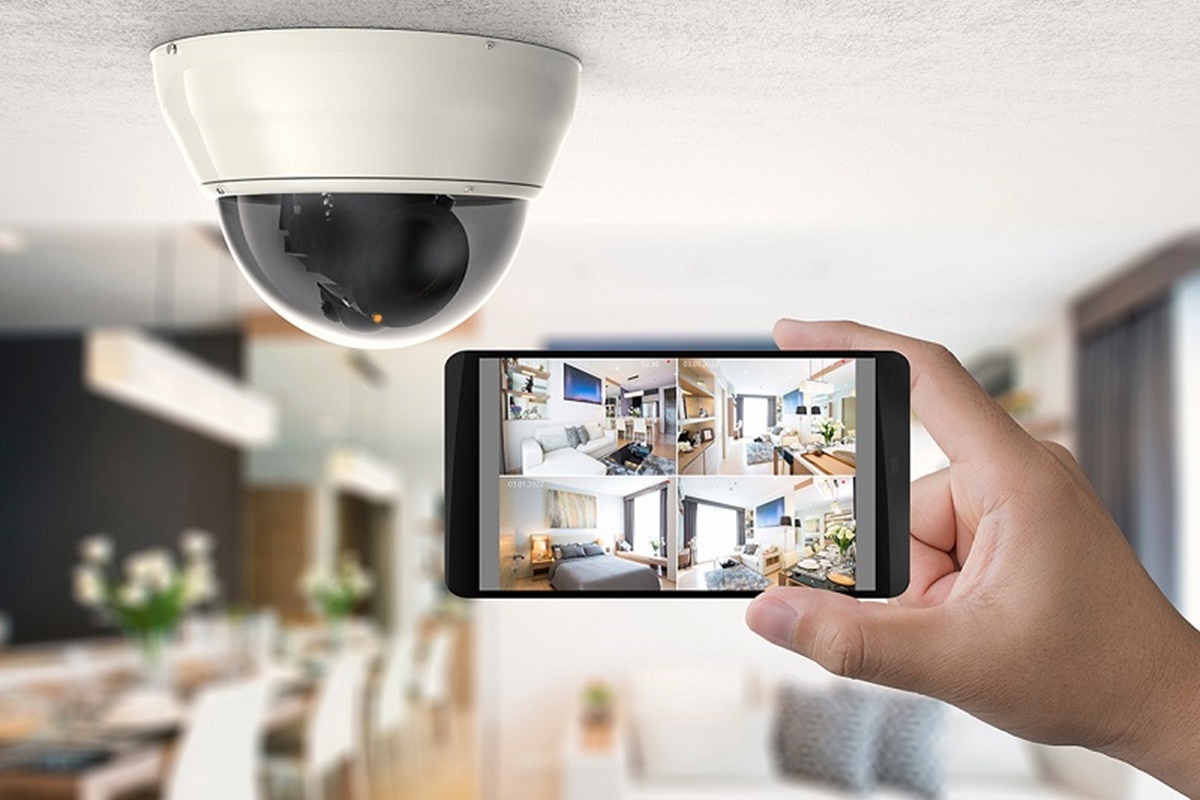

Home Security and Surveillance
How To Upgrade My Wired Security System
Modified: March 6, 2024
Upgrade your wired security system to ensure the utmost safety of your home. Explore the latest home security and surveillance options for enhanced protection.
(Many of the links in this article redirect to a specific reviewed product. Your purchase of these products through affiliate links helps to generate commission for Storables.com, at no extra cost. Learn more)
Introduction
In today’s world, home security is a top priority for many homeowners. With the increasing need for robust surveillance and protection, upgrading your wired security system is a wise investment. Upgrading not only enhances the security measures of your home but also allows you to take advantage of the latest technological advancements in the field of home security.
However, when it comes to upgrading a wired security system, it is essential to follow a systematic approach to ensure compatibility, seamless installation, and optimal performance. In this article, we will guide you through the step-by-step process of upgrading your wired security system, from determining compatibility to troubleshooting and resolving issues that may arise during the installation.
By the end of this article, you will be equipped with the knowledge and confidence to upgrade your wired security system, providing you and your loved ones with a heightened sense of safety and peace of mind.
Key Takeaways:
- Upgrade your wired security system by assessing compatibility, researching upgrades, and carefully installing new components. Thorough preparation and troubleshooting ensure a reliable and effective home security solution.
- Enhance your home security by evaluating your needs, purchasing quality equipment, and configuring system settings. Troubleshoot any issues to ensure a seamless and personalized wired security system.
Determine Compatibility of Existing System
The first step in upgrading your wired security system is to assess the compatibility of your existing system with the newer upgrades available in the market. This involves evaluating the age of your current system, the wiring infrastructure, and the ability to integrate new components.
Start by identifying the make and model of your current security system. This information can usually be found on the control panel or by referring to the system’s documentation. Once you have this information, research the manufacturer’s website or contact their customer support to verify if any upgrade options are available for your specific system.
Consider the age of your existing system as it may affect compatibility. Older systems might not support the latest technologies or have limited upgrade options. If this is the case, you may need to consider a complete replacement of your wired security system.
Next, examine the wiring infrastructure of your current system. The compatibility of your existing wiring will determine if you can simply replace certain components or if you need to rewire your entire system. If your system uses standard wiring protocols such as Ethernet or coaxial cables, it is likely that you can easily upgrade the components without major rewiring.
Additionally, assess the compatibility of your existing system with newer surveillance technologies such as IP cameras or smart home integration. If your current system does not support these features, you may need to invest in a new control panel or upgrade the necessary components to ensure seamless integration.
In some cases, you may also need to consider the power requirements of the new components. Make sure that your existing power supply can handle the additional load or consider upgrading it if necessary.
By thoroughly evaluating the compatibility of your existing system, you can make informed decisions about which upgrades are feasible and determine if any additional preparations or replacements are needed before proceeding with the upgrade process.
Assess Security Needs
Before upgrading your wired security system, it is crucial to assess your unique security needs. Understanding your specific requirements will help you select the right components and features to enhance the security of your home.
Start by evaluating the current vulnerabilities of your home. Consider factors such as the number of entry points, the layout of your property, and any previous security incidents or concerns. This assessment will help you identify the areas that require increased surveillance and protection.
Next, determine the level of monitoring and control you desire. Are you looking for a system that offers remote access and real-time notifications? Do you need the ability to monitor your home from multiple devices or integrate the system with other smart home devices? Understanding your monitoring preferences will help guide your selection of components and features.
Consider the specific security features that will address your concerns. This could include motion detection, night vision cameras, two-way audio communication, or even facial recognition technology. Take into account the different security challenges you face and select the features that best meet your needs.
Budget is also an important factor to consider at this stage. Determine how much you are willing to invest in upgrading your wired security system. This will help guide your decision-making process and ensure that you select components and features that align with your budgetary constraints.
Lastly, consider any future expansion or scalability requirements. Are you planning to add more cameras or sensors in the future? Do you anticipate the need to integrate the security system with additional devices or services? Planning for future growth will save you time and resources down the line.
By thoroughly assessing your security needs, you can tailor the upgrade to meet your specific requirements, ensuring that your wired security system provides the optimal level of protection and peace of mind for you and your family.
Research Upgrades and Available Options
Once you have determined the compatibility of your existing system and assessed your security needs, it’s time to research the available upgrades and options in the market. This step is crucial in selecting the right components and features to enhance your wired security system.
Start by exploring reputable manufacturers and brands that specialize in home security and surveillance. Look for companies with a proven track record of delivering high-quality and reliable products. Read customer reviews and ratings to get insights into the performance and durability of their offerings.
Consider the different components you may need to upgrade, such as cameras, sensors, control panels, and recording devices. Research the specifications and features of each component to determine if they align with your security needs and the compatibility requirements of your existing system.
Pay attention to factors such as camera resolution, field of view, low light performance, weather resistance, and connectivity options. These features will determine the quality of the surveillance footage and the effectiveness of your security system.
Additionally, look for advanced features such as motion detection, facial recognition, and remote access capabilities. These features can greatly enhance the functionality and convenience of your wired security system.
Consider the different options for video recording and storage. You can choose between local storage solutions such as Network Video Recorders (NVR) or cloud-based services. Evaluate the pros and cons of each option based on factors like cost, accessibility, and data security.
Research the available monitoring and alert systems. Many wired security systems allow for real-time notifications and alerts to be sent to your mobile device or email. Look for options that offer these capabilities, as it provides an added layer of security and the ability to respond promptly to any potential threats or incidents.
Lastly, take into account any additional features or integrations that may be relevant to your setup. For example, if you have a smart home ecosystem, consider components that are compatible with your existing devices and platforms.
By thoroughly researching the available upgrades and options, you can make informed decisions about the components and features that best align with your security needs and will enhance the effectiveness of your wired security system.
Purchase Necessary Equipment
After conducting thorough research on the available upgrades and options for your wired security system, it’s time to purchase the necessary equipment. This step involves selecting the components and accessories that will enhance the security and functionality of your system.
Make a comprehensive list of the components you need based on your security needs and the compatibility requirements of your existing system. This may include cameras, sensors, control panels, power supplies, cables, and mounting hardware.
When purchasing the equipment, it’s important to buy from reputable sources to ensure the quality and authenticity of the products. Consider purchasing from authorized retailers or directly from the manufacturers, as they provide warranties and customer support in case of any issues.
Compare prices from different vendors to get the best value for your money. However, be cautious of extremely low-priced options, as they may be of lower quality or counterfeit. Strike a balance between affordability and quality.
Verify the compatibility of each component with your existing system before making the purchase. Double-check the specifications and ensure that each component will work seamlessly with the rest of the system.
Consider any additional accessories or peripherals that may enhance the functionality of your system. This could include storage devices, extra cables, mounting brackets, or surge protectors.
Before finalizing your purchase, review the return policy of the vendor or retailer. This is important in case any equipment arrives faulty or is incompatible with your system.
Keep track of your purchases by maintaining a detailed record of the make, model, and serial numbers of each component. This will come in handy during the installation and troubleshooting process.
By carefully purchasing the necessary equipment, you can ensure that your wired security system is equipped with high-quality components that will provide reliable and effective protection for your home and loved ones.
Prepare for Installation
Once you have purchased the necessary equipment for your upgraded wired security system, it’s time to prepare for the installation process. Proper preparation will help ensure a smooth and efficient installation, saving you time and minimizing any potential issues.
Start by gathering all the equipment and tools you will need for the installation. This may include screwdrivers, drills, wire cutters, cable connectors, and a ladder. Having everything readily available will prevent unnecessary delays during the installation process.
Thoroughly read the installation manuals and documentation provided by the manufacturers. Familiarize yourself with the setup instructions, wiring diagrams, and any specific guidelines or requirements for each component. Understanding the installation process beforehand will make the actual installation much easier.
Prepare your workspace by clearing any clutter or obstacles that may hinder the installation process. Ensure that you have sufficient lighting and a comfortable working environment. Determine the best locations for cameras, sensors, and control panels based on your security needs and the recommendations provided by the manufacturers.
Inspect the wiring infrastructure of your home and assess if any repairs or replacements are needed. Check for any damaged or frayed wires and ensure that the necessary wiring conduits and outlets are in place. Take note of the locations where you will need to run new wiring, if applicable.
If you are uncomfortable with handling electrical or wiring tasks, consider hiring a professional electrician or security system installer to assist with the installation. They have the expertise and knowledge to ensure a safe and proper installation of your wired security system.
Lastly, inform family members or anyone else residing in your home about the upcoming installation process. This will ensure that everyone is aware of the potential disruptions during the installation and will help facilitate a smoother process.
By adequately preparing for the installation, you can minimize the chances of encountering any issues or delays, setting the stage for a successful and efficient upgrade of your wired security system.
Consider upgrading to a wireless security system for easier installation and flexibility. Look for systems with smart home integration for added convenience.
Remove Existing Components
Before installing the new components for your upgraded wired security system, it is important to remove the existing components. This step involves carefully disconnecting and uninstalling the old equipment to make way for the new components.
Start by turning off the power supply to your existing security system. Locate the main power source or circuit breaker that controls the system and switch it off to ensure a safe removal process.
Referencing the installation manuals and documentation of your existing system, identify the specific steps for disconnecting each component. This may include cameras, sensors, control panels, and any other devices connected to the system.
Begin with the cameras by detaching them from their mounts or brackets. Carefully disconnect the cables from the cameras and mark them accordingly to ensure easy identification during the installation of the new components.
Move on to the control panel and carefully disconnect the wiring connections. Take note of the labels or markings on the cables to ensure proper reconnection later. Remove the control panel from its mounting location.
If there are any additional devices connected to your system, such as motion sensors or door/window sensors, remove them following the manufacturer’s instructions. Handle each component with care to avoid any damage during the removal process.
Once all the components have been disconnected and removed, carefully organize and store them in a safe place. It is a good practice to keep the old components until the new system has been successfully installed and tested to ensure a smooth transition in case any issues arise.
Inspect the wiring and mounting locations to ensure that everything is in good condition. If any repairs or replacements are necessary, address them before proceeding with the installation of the new components.
By properly removing the existing components, you create the necessary space and clean slate for the installation of your upgraded wired security system. This step sets the stage for a seamless and successful transition to enhanced security measures for your home.
Install New Components
With the existing components successfully removed, it’s time to install the new components for your upgraded wired security system. Proper installation is crucial to ensure the optimal performance and effectiveness of your new equipment.
Start by referring to the installation manuals and documentation provided by the manufacturers for each component. Familiarize yourself with the specific instructions, wiring diagrams, and any special considerations for installation.
Begin with the control panel. Mount it in a central location that is easily accessible and within reach of power and network connections. Follow the manufacturer’s instructions to connect the necessary wiring, ensuring that each cable is properly labeled and connected to the corresponding terminal.
Move on to the installation of the cameras. Determine the best locations for surveillance coverage based on your security needs and the recommendations provided by the manufacturers. Mount each camera securely using the provided brackets, and ensure they are positioned to provide optimal coverage and minimize blind spots.
Connect the cables from the cameras to the control panel, following the wiring diagrams and instructions provided. Take care to keep the cables tidy and organized to avoid any potential issues during the testing and configuration stages.
If you have additional devices such as motion sensors or door/window sensors, install them in the desired locations according to the manufacturer’s recommendations. Connect the necessary wiring and ensure they are securely mounted.
Pay attention to the proper alignment and angle of the cameras and sensors to maximize their effectiveness. Follow any specific guidelines for adjusting the field of view or sensitivity of the sensors for accurate detection and monitoring.
Once all the components are installed, double-check all the wiring connections to ensure they are secure and properly connected to the control panel or designated ports. Verify that the power supply is correctly connected and turned on.
Take the time to test each component to ensure they are functioning correctly. Verify that the cameras are capturing clear and sharp images, the sensors are detecting motion or opening/closing of doors and windows, and the control panel is receiving and processing the signals from the connected devices.
If you encounter any issues during the installation or testing process, consult the troubleshooting section of the manufacturer’s documentation or contact their customer support for assistance.
By carefully installing the new components of your upgraded wired security system, you lay the foundation for a reliable and effective security solution for your home. A well-executed installation ensures seamless integration and optimal performance of your new equipment.
Connect and Test System
After installing the new components for your upgraded wired security system, the next step is to connect and test the system to ensure everything is functioning as intended. This crucial step ensures that your system is fully operational and ready to provide the level of security you desire.
Start by connecting the necessary cables from the components, such as cameras and sensors, to the control panel. Follow the wiring diagrams provided by the manufacturers to ensure the correct connections are made.
Ensure that all the connections are secure and snug, as loose connections can cause signal loss or unreliable performance. Double-check the cable labels to make sure each component is connected to the correct port or terminal.
Once the connections are in place, turn on the power supply for the system. Give it a few moments for the system to boot up and establish the necessary connections.
Next, test the functionality of each component individually. Verify that the cameras are capturing clear images, and the sensors are detecting motion or changes in the environment. Use the control panel to activate and deactivate the different components to ensure they respond accordingly.
Test the communication between the components and the control panel. Activate the sensors and observe if the control panel receives the signals and triggers the appropriate notifications or alarms. Test the integration of the components with any additional devices or smart home systems if applicable.
Check the monitoring and alert system of your wired security system. Ensure that you receive real-time notifications and alerts on your phone or designated devices when triggered. Test the remote access functionality to monitor your home from a different location if supported.
Evaluate the quality and reliability of the surveillance footage captured by the cameras. Check for any issues with clarity, visibility, or consistency. Adjust camera angles or settings if necessary to optimize the quality of the footage.
If you encounter any issues or malfunctions during the testing phase, consult the troubleshooting section of the manufacturer’s documentation or reach out to their customer support for assistance. They can provide guidance to resolve any potential issues and ensure the proper functioning of your wired security system.
By connecting and testing your system, you can be confident that all the components are communicating effectively, and the system is fully operational. This step allows you to address any issues or concerns before relying on your newly upgraded wired security system to protect your home and loved ones.
Read more: How To Cut Conduit With Wires Inside
Configure System Settings
Once you have connected and tested your wired security system, it’s time to configure the settings to customize and optimize its functionality. By adjusting the system settings, you can tailor the security system to your specific needs and preferences.
Start by accessing the control panel or user interface of your wired security system. Refer to the manufacturer’s documentation to familiarize yourself with the navigation and menu options.
Set up user accounts and access permissions, if applicable. Create unique login credentials for each user and assign different levels of access based on their roles. This helps ensure that only authorized individuals can make changes to the system settings.
Configure the recording settings for the cameras. Determine the resolution, frame rate, and compression settings based on your storage capacity and image quality preferences. Adjust the recording duration or motion-triggered recording settings to optimize storage usage.
Set up a schedule for the system, if supported. Define specific time frames for certain modes or actions, such as arming or disarming the security system, enabling or disabling motion detection, or adjusting the monitoring notifications.
Configure the monitoring and alert system based on your preferences. Set up notifications to be sent via email, SMS, or push notifications to your mobile device. Select the desired triggers for the alerts, such as motion detection, door/window sensor activation, or system tampering.
If your wired security system supports remote access, configure the necessary network settings to enable remote monitoring and control. This may involve setting up port forwarding or VPN access to ensure secure remote connections.
Integrate your wired security system with any additional devices or smart home ecosystems. This could include integrating with voice assistants, automation platforms, or other smart devices to enhance the functionality and convenience of your overall home security setup.
Consider setting up custom zones or areas for motion detection or activity monitoring. Define specific areas within the camera’s field of view that you want the system to focus on, minimizing false alarms from irrelevant movement.
Review and adjust the privacy settings for your wired security system. It is important to strike a balance between security and privacy, ensuring that your cameras are not infringing on the privacy of your family members or neighbors.
Take into account any other features or settings provided by the manufacturer that align with your specific needs. This could include advanced analytics, facial recognition, or specific rules or triggers for automation actions.
By configuring the system settings of your wired security system, you can personalize and optimize its functionality to meet your unique security needs and preferences. This step ensures that the system operates in a way that aligns with your expectations and provides you with peace of mind.
Troubleshoot and Resolve Issues
While setting up and configuring your wired security system, you may encounter certain issues or challenges that need to be addressed. Troubleshooting and resolving these issues ensures the smooth and efficient operation of your security system.
If you experience connectivity issues, start by checking all the connections. Ensure that all cables are securely plugged in and that there are no loose connections or damaged cables. Verify that the power supply is stable and that all components have power.
If you are experiencing video quality issues, such as blurry or distorted footage, check the camera settings and ensure that they are optimized for your environment. Adjust the focus, angle, or lighting conditions to improve the quality of the images captured by the cameras.
If you encounter false alarms or excessive motion detection triggers, review the motion detection settings of your cameras. Adjust the sensitivity or define specific motion detection zones to reduce false alerts triggered by irrelevant movements.
If the control panel or user interface is not responding or functioning as expected, try rebooting the system. Power it off, wait for a few seconds, and then power it back on. If the problem persists, consult the manufacturer’s documentation or contact customer support for further assistance.
If you are unable to access the system remotely, check your network settings and ensure that port forwarding or VPN access is correctly configured. Confirm that your internet connection is stable and that any firewall or security settings are not blocking the access.
If you encounter issues with integration or compatibility with other devices or services, make sure you are following the correct procedures for integration. Check for software updates or firmware upgrades for both your security system and the integrated devices to ensure compatibility.
If you are unable to resolve the issues on your own, don’t hesitate to reach out to the manufacturer’s customer support. They have a team of experts who can provide guidance and assistance in troubleshooting the specific issues you are facing.
Document any issues you face and the steps you take to resolve them. This will help you in future troubleshooting or if you need to seek further assistance from customer support. Maintaining a record of the issues and solutions can be valuable for reference later on.
Remember, troubleshooting is a normal part of setting up and maintaining a wired security system. By identifying and resolving issues promptly, you can ensure the uninterrupted functionality and effectiveness of your home security setup.
Conclusion
Upgrading your wired security system is a proactive step towards enhancing the safety and protection of your home. By following a systematic approach, you can successfully navigate the process from determining compatibility and assessing security needs to purchasing the necessary equipment and completing the installation.
Thorough research on available upgrades and options allows you to select components and features that align with your specific security requirements. Proper preparation and removal of existing components create a clean slate for the installation of the new system.
Connecting and testing the system ensures that all components are functioning correctly and communicating effectively. Configuring system settings and resolving any issues or challenges that arise during the process ensures optimal performance and customization.
Remember, each step of upgrading your wired security system requires attention to detail, careful planning, and troubleshooting skills. By taking the time to understand your security needs, select the right equipment, and follow the proper installation and configuration procedures, you can create a robust security system that provides peace of mind for you and your loved ones.
If you encounter any difficulties along the way, don’t hesitate to consult the manufacturer’s documentation or reach out to their customer support for assistance.
Ultimately, investing in upgrading your wired security system is an investment in the safety and well-being of your home. It is a proactive measure that brings you one step closer to achieving a secure and protected living environment.
Frequently Asked Questions about How To Upgrade My Wired Security System
Was this page helpful?
At Storables.com, we guarantee accurate and reliable information. Our content, validated by Expert Board Contributors, is crafted following stringent Editorial Policies. We're committed to providing you with well-researched, expert-backed insights for all your informational needs.
